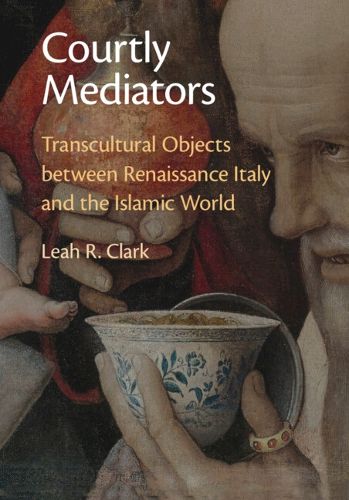Readings Newsletter
Become a Readings Member to make your shopping experience even easier.
Sign in or sign up for free!
You’re not far away from qualifying for FREE standard shipping within Australia
You’ve qualified for FREE standard shipping within Australia
The cart is loading…






In Courtly Mediators, Leah R. Clark investigates the exchange of a range of materials and objects, including metalware, ceramic drug jars, Chinese porcelain, and aromatics, across the early modern Italian, Mamluk, and Ottoman courts. She provides a new narrative that places Aragonese Naples at the center of an international courtly culture, where cosmopolitanism and the transcultural flourished, and in which artists, ambassadors, and luxury goods actively participated. By articulating how and why transcultural objects were exchanged, displayed, copied, and framed, she provides a new methodological framework that transforms our understanding of the Italian Renaissance court. Clark's volume provides a multi-sensorial, innovative reading of Italian Renaissance art. It demonstrates that the early modern culture of collecting was more than a humanistic enterprise associated with the European roots of the Renaissance. Rather, it was sustained by interactions with global material cultures from the Islamic world and beyond.
$9.00 standard shipping within Australia
FREE standard shipping within Australia for orders over $100.00
Express & International shipping calculated at checkout
In Courtly Mediators, Leah R. Clark investigates the exchange of a range of materials and objects, including metalware, ceramic drug jars, Chinese porcelain, and aromatics, across the early modern Italian, Mamluk, and Ottoman courts. She provides a new narrative that places Aragonese Naples at the center of an international courtly culture, where cosmopolitanism and the transcultural flourished, and in which artists, ambassadors, and luxury goods actively participated. By articulating how and why transcultural objects were exchanged, displayed, copied, and framed, she provides a new methodological framework that transforms our understanding of the Italian Renaissance court. Clark's volume provides a multi-sensorial, innovative reading of Italian Renaissance art. It demonstrates that the early modern culture of collecting was more than a humanistic enterprise associated with the European roots of the Renaissance. Rather, it was sustained by interactions with global material cultures from the Islamic world and beyond.